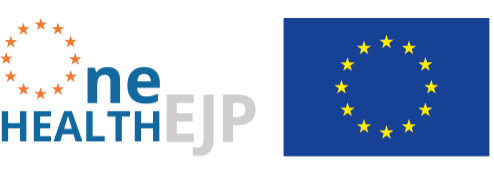Addlestone, England, United Kingdom
14 Rue Pierre et Marie Curie, Maisons-Alfort, Île-de-France, France
Ullevålsveien 68, Oslo, Oslo, Norway
3721 Utrecht Court, Christchurch, England, United Kingdom
Houtribweg 39, Lelystad, Flevoland, The Netherlands
Viale Regina Elena, Rome, Lazio, Italy
Max-Dohrn-Straße 8, Berlin, Berlin, Germany
Anker Engelunds Vej 1, Stampen, Region Hovedstaden, Denmark

The Project #RADAR
| Start: | 1 January 2018 |
| Duration: | 2 Years |
| Domain: | Antimicrobial Resistance |
| Keywords: | Antimicrobial resistance, risk assessment, transmission, disease burden, evidence synthesis |
| Contact: | Eelco FRANZ (RIVM) |
RaDAR: Risk and Disease burden of Antimicrobial Resistance
The aims of the RaDAR project were to generate consensus estimates for sources attribution, risks of exposure and disease burden of AMR by integrating available data from various sources.
Antimicrobial resistance is an increasingly serious global threat to global public health that requires action across all government sectors and society. Circulation of antibiotic resistant bacteria in food and the environment and the resulting exposure of human beings to these bacteria may be significant. In general, information on the overall exposure to AMR from food and the environment is scarce. Therefore efforts are needed to fill data gaps and systematically integrate data into consensus estimates for sources attribution, risks of exposure and disease burden.
The RaDAR project contributed significantly to filling these gaps in knowledge by producing and harmonizing modelling methodology and frameworks specifically for AMR related problems. The multidisciplinary and cross-member-state approach of RaDAR was effective in:
- Addressing the relative and absolute contribution of animal and environmental sources to the public health burden of AMR.
- Linking data on antimicrobial consumption and the effects of different kinds of antimicrobial use on AMR in animal husbandry.
- Modelling the spread of resistance determinants in microbial communities, the environment and along the food chain.
- Quantifying human exposure and disease burden.
The project developed generic risk and transmission models that can be adapted to various bacterial species and resistance determinants. It generated consensus estimates for sources attribution, risks of exposure and disease burden of AMR by integrating available data from various sources.
Overall RaDAR led to a consolidation of the international cooperation with respect to the assessment of risks related to the complex AMR problem.
Project Outputs and Outcomes
- Developed a large-scale curated database of (AMR) plasmids from a range of different bacterial species and sources that is available online (known as “COMPASS”, Dourarre 2020 Frontiers in Microbiology). This novel resource will help researchers understand the genetic plasticity and transmission routes of plasmids, which are crucial in the fight against the spread of antimicrobial resistant pathogens.
- Provided an infrastructure for exchanging and annotating risk assessment models in an exchangeable and reproducible file format called FSK and key or desirable features that facilitate access and usability of the inventory.
- Produced state-of-the-art AMR risk assessment models for different food chains in a generic framework. These generic methods may be more crude, but will allow for combining the risks in the different (sub-)categories and may thus help to create a more complete picture of the AMR problems throughout.
- Produced a framework for the use of machine-learning methods in AMR risk assessment in order to identify risk factors from high-dimensional data with more variables than data points and/or categorical features with many classes.
- Designed a new burden of disease (BoD) approach suitable for estimating the excess BoD associated with AMR bacterial infection. By ‘excess BoD’ we mean mortality and morbidity (computed as DALY) associated with resistance, over and above the mortality and morbidity associated with the same – but antimicrobial-susceptible – bacterial infection.
- Produced a One-Health source attribution model that estimates the relative contribution of reservoirs and transmission routes to AMR (ESBL E. coli) carriership in the population. RaDAR adopted established source attribution methods for zoonotic pathogens for specific use for AMR (mainly by introducing humans not only as an endpoint but also as a source).
- Studied a new paradigm for AMR surveillance based on metagenomics. RaDAR showed that metagenomic surveillance is a suitable methodology for population based surveillance of AMR and observed that AMU and AMR are in general correlated both at phenotypic and genotypic levels. Other factors also play a role in the abundances of AMR.
- Developed and applied a Bayesian Evidence Synthesis (BES) approach to integrate all available data and information by combining all relevant data with a priori knowledge and thereby eventually infer estimates on prevalence/incidence of AMR infections / carriership.
Project Assets
Kausrud, K., Skjerdal, T., Johannessen, G. S., Ilag, H. K., Norström, M. (2022). The Heat Is On: Modelling the Persistence of ESBL-Producing E. coli in Blue Mussels under Meal Preparation. Foods. 12(1), 14. DOI: https://doi.org/10.3390%2Ffoods12010014
McCarthy, C., Viel, A., Gavin, C., Sanders, P., Simons, R. R. L. (2022). Estimating the likelihood of ESBL-producing E. coli carriage in slaughter-aged pigs following bacterial introduction onto a farm: A multiscale risk assessment. Microbial Risk Analysis. 20, 100185. DOI: https://doi.org/10.1016/j.mran.2021.100185
Godijk, N. G., Bootsma, M. C. J., Bonten, M. J. M. (2022). Transmission routes of antibiotic resistant bacteria: a systematic review. BMC Infectious Disease. 22(1), 482. DOI: https://doi.org/10.1186%2Fs12879-022-07360-z
Douarre, P E, Mallet, L, Radomski, N, Felten, A, Mistou, M. (2020). Analysis of COMPASS, a New Comprehensive Plasmid Database Revealed Prevalence of Multireplicon and Extensive Diversity of IncF Plasmids. Frontiers in Microbiology, 11, pp. 1-15. DOI: https://doi.org/10.3389/fmicb.2020.00483.
Mughini-Gras, L, Dorado-García, A, van Duijkeren, E, van den Bunt, G, Dierikx, CM, Bonten, MJM, Bootsma, MCJ, Schmitt, H, Hald, T, Evers, EG, de Koeijer, A, van Pelt, W, Franz, E, Mevius, DJ, Heederik, DJJ. (2019). Attributable Sources of Community-Acquired Carriage of Escherichia coli Containing β-Lactam Antibiotic Resistance Genes: A Population-Based Modelling Study. The Lancet Planetary Health, 3, pp. 357- 369. DOI: https://doi.org/10.1016/S2542-5196(19)30130-5



